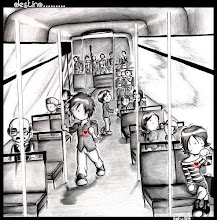INFORMATION SYSTEMS.
An information system is a collection of methods, practices, algorithms and methodologies that transforms data into information and knowledge desired by, and useful for, individual and group users in organizations and other entities. This system can involve a combination of work practices, information, people, and technologies organized to accomplish goals in an organization.
An information system is a collection of methods, practices, algorithms and methodologies that transforms data into information and knowledge desired by, and useful for, individual and group users in organizations and other entities. This system can involve a combination of work practices, information, people, and technologies organized to accomplish goals in an organization.
It is an integrated set of components for collecting, storing, processing, and communicating information. Business firms, other organizations, and individuals in contemporary society rely on information systems to manage their operations, compete in the marketplace, supply services, and augment personal lives. For instance, modern corporations rely on computerized information systems to process financial accounts and manage human resources; municipal governments rely on information systems to provide basic services to its citizens; and individuals use information systems to study, shop, bank, and invest.
As information systems have enabled more diverse human activities, they have exerted a profound influence over society. These systems have quickened the pace of daily activities, affected the structure and mix of organizations, changed the type of products bought, and influenced the nature of work. Information and knowledge have become vital economic resources. Yet, along with opportunities, information systems have exposed new threats.
The main kinds of information systems in business are described briefly below:
- Executive Support Systems
An Executive Support System ("ESS") is designed to help senior management make strategic decisions. It gathers, analyses and summarises the key internal and external information used in the business.
A good way to think about an ESS is to imagine the senior management team in an aircraft cockpit - with the instrument panel showing them the status of all the key business activities. ESS typically involve lots of data analysis and modelling tools such as "what-if" analysis to help strategic decision-making.
- Management Information Systems
A management information system ("MIS") is mainly concerned with internal sources of information. MIS usually take data from the transaction processing systems (see below) and summarise it into a series of management reports.
MIS reports tend to be used by middle management and operational supervisors.
Decision-Support Systems
Decision-support systems ("DSS") are specifically designed to help management make decisions in situations where there is uncertainty about the possible outcomes of those decisions. DSS comprise tools and techniques to help gather relevant information and analyse the options and alternatives. DSS often involves use of complex spreadsheet and databases to create "what-if" models.
Knowledge Management Systems
Knowledge Management Systems ("KMS") exist to help businesses create and share information. These are typically used in a business where employees create new knowledge and expertise - which can then be shared by other people in the organisation to create further commercial opportunities. Good examples include firms of lawyers, accountants and management consultants.
KMS are built around systems which allow efficient categorisation and distribution of knowledge. For example, the knowledge itself might be contained in word processing documents, spreadsheets, PowerPoint presentations. internet pages or whatever. To share the knowledge, a KMS would use group collaboration systems such as an intranet.
Transaction Processing Systems
As the name implies, Transaction Processing Systems ("TPS") are designed to process routine transactions efficiently and accurately. A business will have several (sometimes many) TPS; for example:
- Billing systems to send invoices to customers- Systems to calculate the weekly and monthly payroll and tax payments- Production and purchasing systems to calculate raw material requirements- Stock control systems to process all movements into, within and out of the business
Office Automation Systems
Office Automation Systems are systems that try to improve the productivity of employees who need to process data and information. Perhaps the best example is the wide range of software systems that exist to improve the productivity of employees working in an office (e.g. Microsoft Office XP) or systems that allow employees to work from home or whilst on the move.

No comments:
Post a Comment